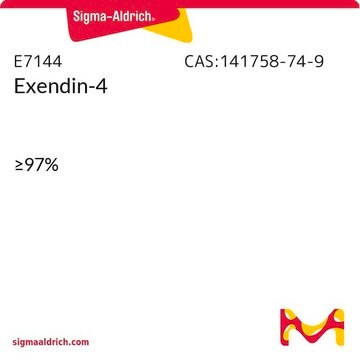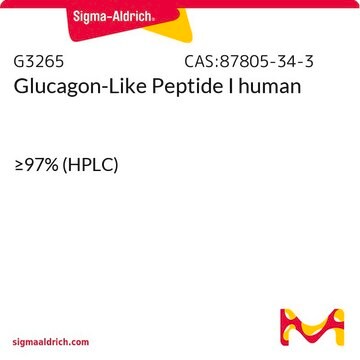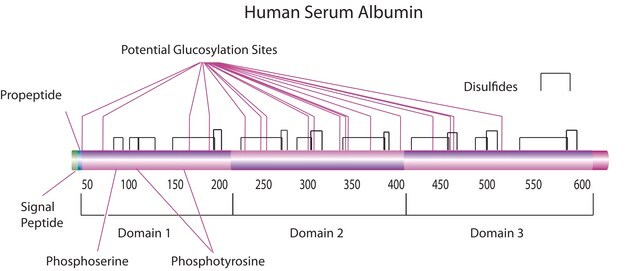SAB4200795
Anti-Exendin-4 antibody produced in rabbit
affinity isolated antibody
Synonym(s):
Anti-Exenatide
About This Item
Recommended Products
biological source
rabbit
Quality Level
antibody form
affinity isolated antibody
antibody product type
primary antibodies
clone
polyclonal
form
buffered aqueous solution
concentration
~1 mg/mL
technique(s)
indirect ELISA: 0.125-0.25 μg/mL using 1 μg/mL Exendin-4 protein for coating
UniProt accession no.
shipped in
dry ice
storage temp.
−20°C
target post-translational modification
unmodified
General description
Exendin-4 mimics the activity of mammalian incretin hormone glucagon-like peptide 1 (GLP-1) and thus play a role in the control of glucose. This includes the secretion of insulin in a glucose-dependent manner, negative regulation of high glucagon secretion, and increased duration of stomach emptying. In type 2 diabetes patients, this peptide can be administered subcutaneously for glycemic control, when metformin is unable to produce adequate results. Exendin-4 promotes the neogeneration and proliferation of β-cells, and thus aids in the regeneration of pancreas. It acts as a ligand to exendin receptor and leads to an elevation of acinar cell cAMP levels.
Anti-Exendin-4 antibody specifically recognizes synthetic Exendin-4 and does not cross react with GLP-1.
Immunogen
Application
Physical form
Other Notes
Not finding the right product?
Try our Product Selector Tool.
Storage Class Code
10 - Combustible liquids
WGK
WGK 3
Flash Point(F)
Not applicable
Flash Point(C)
Not applicable
Choose from one of the most recent versions:
Certificates of Analysis (COA)
Don't see the Right Version?
If you require a particular version, you can look up a specific certificate by the Lot or Batch number.
Already Own This Product?
Find documentation for the products that you have recently purchased in the Document Library.
Our team of scientists has experience in all areas of research including Life Science, Material Science, Chemical Synthesis, Chromatography, Analytical and many others.
Contact Technical Service







